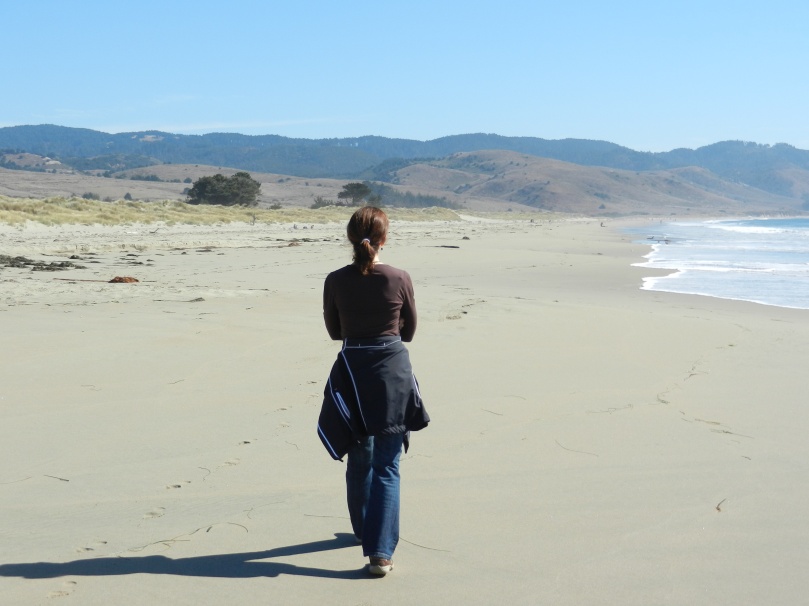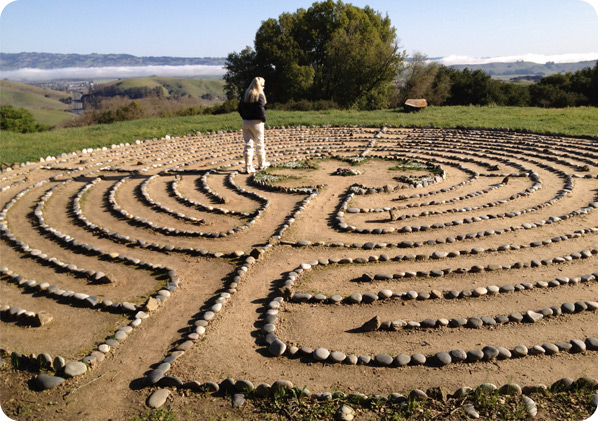Walking meditation, says Thich Nhat Hanh, “is really to enjoy the walking – walking not in order to arrive, but just to walk. The purpose is to be in the present moment and, aware of our breathing and our walking, to enjoy each step.” Instead of being on the way to someplace, it is the act of walking itself that is the purpose.
I’m in the middle of a book that inspires me to contemplate walking as meditation. The Unlikely Pilgrimage of Harold Fry, by Rachel Joyce, is about a recently retired man who gets a letter from a friend he hasn’t seen in 20 years, telling him that she is dying of cancer. The letter disrupts the unhappy inertia of his life, and on the spur of the moment, he decides to walk hundreds of miles across England to see her before she dies.
When I started reading, I thought that this book would be just a lighthearted, quirky story. But it has turned out to be engaging, thought-provoking and touching. Harold changes on the journey, not only from being physically unprepared to being fit and able; but also in the way he views his life. At first he is tortured by memories of the past, and he doubts what he is doing; but the walk transforms him into someone who has hope.
Walking is the most recommended physical activity in the world, because it is accessible to almost everyone, and offers many health benefits. Among them is an increase in “well-being” in people who walk regularly. Walking promotes clear thinking, and gives people an opportunity to notice their thoughts and feelings. Its ability to integrate sensory experience, motor skills and brain activity make it a part of psychotherapy for some mental health practitioners.
While it is possible to walk mindfully as you walk for exercise, walking meditation means paying attention to the walking itself: the sound your feet make as they touch the ground, the rhythm of your steps, the sound of your breath. Gradually you might find that your breath becomes regular and paces itself with your footsteps, for example 3 steps for each inhale and 4 steps for each exhale. Jon Kabat-Zinn says about walking meditation, “The challenge is, can you be fully with this step, with this breath?”
Another way to do a walking meditation is to walk in a labyrinth. Labyrinths have been used for thousands of years as a way to clear the mind and find answers to questions. They are often found on the grounds of churches or other religious centers, or in places of health and healing. A labyrinth consists of concentric circles leading to a center; you walk around the spiral to the center and then retrace your steps on the way out. It is a metaphor for the spiritual journey inward. At the labyrinth near my house, there is a quote from St. Augustine: “It is solved by walking.”
I don’t know yet if Harold Fry will solve the unhappiness of his life by the end of his journey, or the end of the book. While I wonder what will happen, I’m savoring each chapter as I go. I do know that what he has learned already is this: He doesn’t need to be in a hurry to arrive at his destination, because at each moment of the journey he is arriving somewhere.
